Size Of Landscape Photo

Table of Contents
The Perfect Landscape Photo Size: A Guide for Beginners and Pros
Choosing the right size for your landscape photos is crucial for both online and print displays. A poorly sized image can look pixelated, blurry, or simply underwhelming, undermining the beauty of your hard work. This guide explores the optimal dimensions for various uses, helping you achieve stunning results regardless of your chosen platform.
Understanding Resolution and Aspect Ratios
Before diving into specific sizes, let's clarify two key concepts: resolution and aspect ratio.
-
Resolution: This refers to the number of pixels in an image (width x height). Higher resolution means more detail, resulting in sharper images, particularly important for large prints or high-resolution displays. Think of it like the number of threads in a woven tapestry – more threads, more detail.
-
Aspect Ratio: This describes the proportional relationship between the width and height of an image. Common aspect ratios include:
- 4:3: A classic ratio, often found in older cameras and some monitors.
- 3:2: Popular among DSLRs and many modern cameras. Offers a good balance between landscape and portrait orientation.
- 16:9: The standard for widescreen displays and HD video. Ideal for showcasing expansive landscapes.
- 1:1: A square format, offering symmetry and a different aesthetic feel.
Understanding these two elements is crucial for selecting the correct size for your needs.
Optimal Landscape Photo Sizes for Different Platforms
The ideal size depends heavily on where you intend to use your image. Here's a breakdown:
Web Use
For online platforms like websites, blogs, and social media, the exact pixel dimensions are less critical than maintaining a good balance between quality and file size. Larger files load slowly, impacting user experience. Aim for these guidelines:
-
Web Galleries & Blogs: Around 1200-1920 pixels on the longest side. This allows for good quality viewing on most screens while avoiding excessively large file sizes. Remember to compress your images using a tool like TinyPNG to minimize file size without sacrificing too much quality.
-
Social Media: Each platform has its own optimal dimensions. Check the specifications for each platform (Facebook, Instagram, Pinterest, etc.) as these change frequently. Generally, you'll want images that are between 1080 to 2048 pixels on their longest side.
-
Email Newsletters: Keep it compact! Images around 600-800 pixels on the longest side are usually sufficient and will avoid rendering issues in different email clients.
Print Use
Print sizes demand higher resolutions to avoid pixelation. The required resolution depends on the final print size and viewing distance. A general rule of thumb is 300 DPI (dots per inch).
- Small Prints (e.g., 4x6 inches): Around 1200 x 1800 pixels (300 DPI)
- Medium Prints (e.g., 8x10 inches): Around 2400 x 3000 pixels (300 DPI)
- Large Prints (e.g., 16x20 inches): Around 4800 x 6000 pixels (300 DPI)
Important Note: Always ensure your image has a resolution sufficient for your intended print size. Using a low-resolution image for a large print will result in a blurry and unprofessional final product.
Choosing the Right File Format
The file format also impacts image quality and size. For web use, JPEG is a good choice due to its balance of quality and file size. For print, TIFF provides better quality but larger file sizes.
Keyword Optimization for SEO
To optimize this article for search engines, we've strategically used relevant keywords such as "landscape photo size," "resolution," "aspect ratio," "DPI," "JPEG," "TIFF," "web," "print," "social media," and "image size." These keywords are naturally integrated into the text to avoid keyword stuffing, ensuring readability remains a top priority. Off-page SEO strategies, such as link building and social media sharing, further enhance online visibility.
Conclusion
Selecting the correct size for your landscape photos requires consideration of both resolution and aspect ratio, along with the intended platform (web or print). By understanding these factors and following the guidelines provided, you can ensure your stunning landscape photographs are displayed to their full potential. Remember to optimize your images for web use by compressing them without sacrificing too much quality. By paying attention to these details, you'll significantly elevate the impact of your work.

Thank you for visiting our website wich cover about Size Of Landscape Photo. We hope the information provided has been useful to you. Feel free to contact us if you have any questions or need further assistance. See you next time and dont miss to bookmark.
Featured Posts
-
Tv Wall Mount For Above Fireplace
Dec 05, 2024
-
Ames Furniture
Dec 05, 2024
-
Record Bitcoin Price Trumps Crypto Choice
Dec 05, 2024
-
Loan Closets Michigan
Dec 05, 2024
-
Como Conseguir Clientes Para Landscaping
Dec 05, 2024